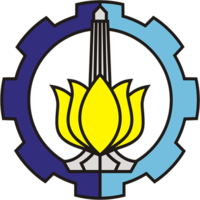The Importance of Gender-Based Standard Operating Procedures for Disaster Management in East Java
Abstract
Disaster management addresses gender inequality by mitigating adverse effects on women. Involving women in disaster risk reduction is crucial, but their participation is often insufficient, leading to inadequate attention to their specific needs. In Indonesia, where women make up over half the population, their involvement in disaster management is essential. This study explores women’s disaster risk mitigation strategies and emphasizes gender-responsive disaster management approaches. Following the 2021 Mount Semeru eruption, research in East Java revealed gender-sensitive disaster management deficiencies. Traditional methods often fail to support women and children who are particularly vulnerable. The study highlights the importance of education, training, and gender-sensitive disaster management policies. Using a phenomenological approach, the study conducted direct observations, in-depth interviews, and focus groups. It identified 24 significant obstacles in gender-based disaster management, such as inadequate casualty statistics and the lack of gender-specific infrastructure in refugee camps. The research underscores the need for gender-specific standard operating procedures (SOPs) to safeguard women and children's well-being during and after disasters. Enhancing education and capacity-building in vulnerable villages is also crucial for effective disaster mitigation. To improve disaster resilience, it is essential to integrate women into the disaster management framework, acknowledging their specific needs and harnessing their capabilities.
Keywords
Full Text:
PDFReferences
Achmad, Z. A., Alamiyah, S. S., Juwito, J., Wahyudi, A., & Siswati, E. (2022). Review berita dan regulasi lokal pada Indeks Demokrasi Indonesia di kota Blitar tahun 2020. AKUNTABEL: Jurnal Akuntansi Dan Keuangan, 19(2), 448–458. https://doi.org/10.29264/JAKT.V19I2.10977
Achmad, Z. A., Mardliyah, S., Siswati, E., Luawo, S. R., & Wahyudi, A. (2020). Menumbuhkan Upaya Diversifikasi Usaha Melalui Penguatan Ketrampilan Pada Komunitas Koperasi Wanita Nelayan Di Gresik. Jurnal Abdimas Bela Negara, 1(2), 1–14. https://doi.org/10.33005/jabn.v1i2.18
Achmad, Z. A., Siswati, E., & Wahyudi, A. (2021). Data Indeks Demokrasi Indonesia Di Kota Blitar Tahun 2019 (Z. A. Achmad (ed.)). Sahaja. https://id1lib.org/book/11816586/e616ae
Achmad, Z. A., Tranggono, D., Winarno, S. T., Andarini, S., & Mas’udah, K. W. (2022). Variety of Flavors, Appropriate Technology, and Online Marketing for Developing Milkfish Cracker Small Business. PLAKAT: Jurnal Pelayanan Kepada Masyarakat, 4(1), 39–57.
Adiputra, W. M. (2008). Literasi Media dan Interpretasi atas Bencana. Jurnal Ilmu Sosial Dan Ilmu Politik, 11(3), 287–414.
Alamiyah, S. S., Arviani, H., & Achmad, Z. A. (2021). Mothers’ Medical-based Experience as the Most Sought-after Online Information by New
Mothers During Pandemic COVID-19. The Journal of Society and Media, 5(1), 78–98. https://doi.org/10.26740/jsm.v5n1.p78-98
Anderson-Berry, L., & King, D. (2005). Mitigation of the Impact of Tropical Cyclones in Northern Australia through Community Capacity Enhancement. Mitigation and Adaptation Strategies for Global Change, 10(July), 367–392.
BPS Kabupaten Lumajang. (2023). Kabupaten Lumajang dalam Angka 2023 (35080.2302; 0215-5648). BPS Kabupaten Lumajang.
Bujra, J. M. (1981). Women and national development: The complexities of change. In Wellesley Editorial Committee (Ed.), Women’s Studies International Quarterly (Vol. 4, Issue 2, p. 266). The University of Chicago Press. https://doi.org/10.1016/S0148-0685(81)94430-4
CIP. (2012). National Guidelines For Standard Operating Procedures (SOPs) For Prevention of and Response to Gender Based Violence in Humanitarian Settings (SOPs Working Group - GBV Sub Cluster Islamabad, Issue May 2008).
Conceição, P. (2022). Human Development Report 2021/2022: Uncertain times, unsettled lives, Shaping our future in a transforming world. United Nations Development Programme. https://hdr.undp.org/system/files/documents/...report.../hdr2021-22pdf_1.pdf
Dodon. (2013). Indikator dan perilaku kesiapsiagaan masyarakat di permukiman padat penduduk dalam antisipasi berbagai fase bencana banjir. Jurnal Perencanaan Wilayah Dan Kota, 24(2), 125–140. http://www.sappk.itb.ac.id/jpwk/wp-content/uploads/2014/02/Jurnal-9-Dodon.pdf
Drabek, T. E. (1986). Human System Responses to Disaster. Springer New York. https://doi.org/10.1007/978-1-4612-4960-3
Enarson, E. P. (2012). Women confronting natural disaster: From vulnerability to resilience Boulder. Lynne Rienner Publishers.
First, J. M., First, N. L., & Houston, J. B. (2017). Intimate Partner Violence and Disasters: A Framework for Empowering Women Experiencing Violence in Disaster Settings. Affilia - Journal of Women and Social Work, 32(3), 390–403. https://doi.org/10.1177/0886109917706338
Ginige, K., Amaratunga, D., & Haigh, R. (2014). Tackling Women’s Vulnerabilities through Integrating a Gender Perspective into Disaster Risk Reduction in the Built Environment. Procedia Economics and Finance, 18, 327–335.
Guest, G., Namey, E. E., & Mitchell, M. L. (2013). Participant Observation. Collecting Qualitative Data. A Field Manual for Applied Research, 75–112. https://doi.org/10.4135/9781412985376
Hart, K. (2011). Jack Goody’s Vision. In Jack Goody’s Vision of World History and African Development Today (pp. 3–29). Max Planck Institute for Social Anthropology. http://www.eth.mpg.de/cms/en/research/d2/multimedia/Hart_Goody_Lecture.pdf
Haryono, T. J. S., Koesbardiati, T., & Kinasih, S. E. (2012). Model Strategi Mitigasi Berbasis Kepentingan Perempuan pada Komunitas Survivor di Wilayah Rawan Banjir. Masyarakat, Kebudayaan Dan Politik, 25(3), 184–194. http://www.journal.unair.ac.id/filerPDF/03 trijoko endah_EDITAN jadi, dev2 fix.pdf
Hemachandra, K., Amaratunga, D., & Haigh, R. (2018). Role of women in disaster risk governance. Procedia Engineering, 212, 1187–1194. https://doi.org/10.1016/J.PROENG.2018.01.153
Hidayati, D., Widayatun, & Hidayati, I. (2006). Pengelolaan Bencana Berbasis Gender: Pembelajaran Dari Gempa Bantul (D. Hidayati (ed.)). Pusat Penelitian Kependudukan–LIPI dan PT Dian Rakyat.
Humas BNPB. (2019). Media Massa Berperan Tingkatkan Pemahaman dan Kesiapsiagaan Masyarakat. Bnpb.Go.Id. https://bnpb.go.id/berita/media-massa-berperan-tingkatkan-pemahaman-dan-kesiapsiagaan-masyarakat
Humas UPN. (2021). Aksi Nyata Bantu Korban Erupsi Semeru, ITS-UNAIR-UPNVJT Gelar KKN Kolaborasi PTN Jatim Peduli Semeru. Upnjatim.Ac.Id. https://www.upnjatim.ac.id/aksi-nyata-bantu-korban-erupsi-semeru-its-unair-upnvjt-gelar-kkn-kolaborasi-ptn-jatim-peduli-semeru/
Joseph-Brown, L. S., & Tuiloma-Sua, D. (2012). Integrating Gender in Disaster Management in Small Island Developing States: A Guide (J.
Fairholm & K. Bernard (eds.); 1st ed.). CRMI-UNDP.
KPPPA. (2011). Gender dalam Bencana Alam dan Adaptasi Iklim. In Kertas Kebijakan (No. 6; Kertas Kebijakan).
Maarif, S., & Hizbaron, D. R. (2018). Stategi Menuju Masyarakat Tangguh Bencana dalam Perspektif Sosial. In Gadjah Mada University Press. Gadjah Mada University Press. https://ugmpress.ugm.ac.id/id/product/geografi/strategi-menuju-masyarakat-tangguh-bencana-dalam-perspektif-sosial
Majni, F. A. (2022, March 4). BNPB Usung Kesetaraan Gender dalam Penanggulangan Bencana. Mediaindonesia.Com. https://mediaindonesia.com/humaniora/475729/bnpb-usung-kesetaraan-gender-dalam-penanggulangan-bencana
Mariampolski, H. (1999). The Power of Ethnography. International Journal of Market Research, 41(1), 12.
Muhari, A. (2021, December 23). Korban Meninggal Paska Erupsi Semeru Bertambah Menjadi 51 Jiwa - BNPB. Bnpb.Go.Id. https://bnpb.go.id/berita/korban-meninggal-paska-erupsi-semeru-bertambah-menjadi-51-jiwa
Nugroho, W. (2021, December 7). Tanda Erupsi Semeru dan Ajakan Berselaras dengan Alam. Kompas.Com. https://www.kompas.com/tren/read/2021/12/07/100039865/tanda-erupsi-semeru-dan-ajakan-berselaras-dengan-alam?page=all
Okai, A. (2022). Women are hit hardest in disasters, so why are responses too often gender-blind? Undp.Org. https://www.undp.org/blog/women-are-hit-hardest-disasters-so-why-are-responses-too-often-gender-blind
Panorama, A. D., Nastiti, N. N., & Anfasa, F. A. (2021). Kerja Sama Pengurangan Risiko Bencana Indonesia Australia 2016-2018. Jurnal Academia Praja, 4(1), 223–243. https://doi.org/10.36859/jap.v4i1.290
Pemkab Malang. (2021). Rancangan Akhir Rencana Strategis (Renstra) Badan Penanggulangan Bencana Daerah Kabupaten Malang Tahun 2016-2021.
Pincha, C. (2008). Gender-Sensitive Disaster Management: A Toolkit for Practitioners. Oxfam America and NANBAN Trust.
Rahmawati, W. (2014). Peran Media Komunikasi Dalam Tanggap Bencana. Jurnal Dialog Penanggulangan Bencana, 5(1), 25–40.
Robert, L. (2020). Communication during Disaster Recovery. In Disaster Recovery Guidance Series. The World Bank.
Robles, C. P. Q., & Benavidez, M. (2020). Gender Equality and Women’s Empowerment in Disaster Recovery (Disaster Recovery Guidance Series). https://doi.org/10.1596/33684
Romdiati, H., Handayani, T., & Noveria, M. (2008). Kesiapsiagaan Masyarakat dalam Mengantisipasi Bencana Alam: Sistem Pengelolaan Pemenuhan Kebutuhan Dasar bagi Korban Bencana, Kota Bengkulu. LIPI Press.
Shaluf, I. M. (2007). Disaster Prevention and Management. Disaster Types, 5(16), 704–717.
Sholahuddin, M. (2021, December 27). Bantu Warga Terdampak Semeru, Unair, ITS, dan UPN Gelar KKN Kolaborasi. Jawapos.Com. https://www.jawapos.com/surabaya-raya/01361599/bantu-warga-terdampak-semeru-unair-its-dan-upn-gelar-kkn-kolaborasi
Suaedi, F., & Wardiyanto, B. (2010). Revitalisasi Administrasi Negara: Reformasi Birokrasi dan e-Governance. Graha Ilmu.
Suhari, S., Yuswadi, H., Gumanti, T. A., & Maarif, S. (2017). Study on the Effectiveness of the Policy Implementation on Disaster Mitigation of Mount Semeruin Lumajang, Indonesia. Asian Journal of Social Sciences and Management Studies, 4(2), 94–99.
https://doi.org/10.20448/journal.500.2017.42.94.99
Tjahjono, A. F., Mashud, M., & Suaedi, F. (2022). Implementation of social capital for multipurpose cooperative autonomy. Masyarakat, Kebudayaan Dan Politik, 35(1), 44–57. https://doi.org/10.20473/MKP.V35I12022.44-57
Tomaszewski, L. E., Zarestky, J., & Gonzalez, E. (2020). Planning Qualitative Research: Design and Decision Making for New Researchers. International Journal of Qualitative Methods, 19, 1–7. https://doi.org/10.1177/1609406920967174
Tranggono, D., Nuryananda, P. F., Yusuf, A., Putra, T., Kidul, B., & Sidoarjo, K. (2020). Pemberdayaan Perempuan Nelayan Dalam Peningkatan Produksi Krupuk Kerang di Desa Bluru Kidul, Kecamatan Sidoarjo, Kabupaten Sidoarjo. Jurnal Abdimas Bela Negara, 1(1), 20–28.
Wahyudin, D. (2010). Aliran Lava Produk Letusan Celah Tahun 1941 serta Kemungkinan Terjadinya Letusan Samping Baru di Gunung Semeru Jawa Timur. Jurnal Lingkungan Dan Bencana Geologi, 1(3), 199–211.
Wahyuni, H. I. (2008). Kecenderungan “Framing” Media Massa Indonesia dalam Meliput Bencana Sebagai Media Event. Jurnal Komunikasi FISIPOL UGM, Yogyakarta, 11(3), 1–22.
Women Desk. (2020). Gender Standard Operating Procedures for FDMA. FATA Disaster Management Authority In collaboration with UN Women Team.
DOI: http://dx.doi.org/10.12962%2Fj24433527.v17i1.19284
Refbacks
- There are currently no refbacks.
This work is licensed under a Creative Commons Attribution 4.0 International License.





